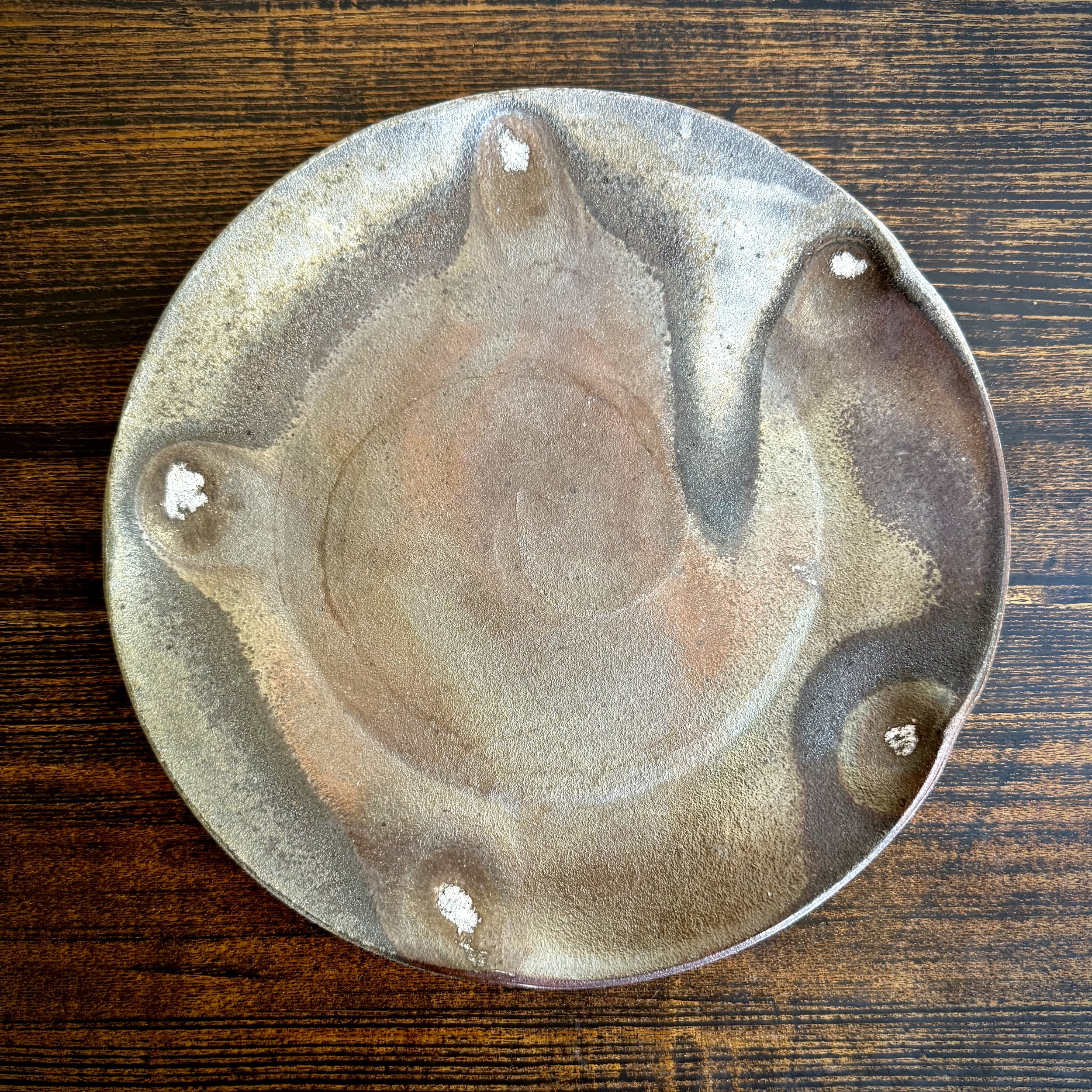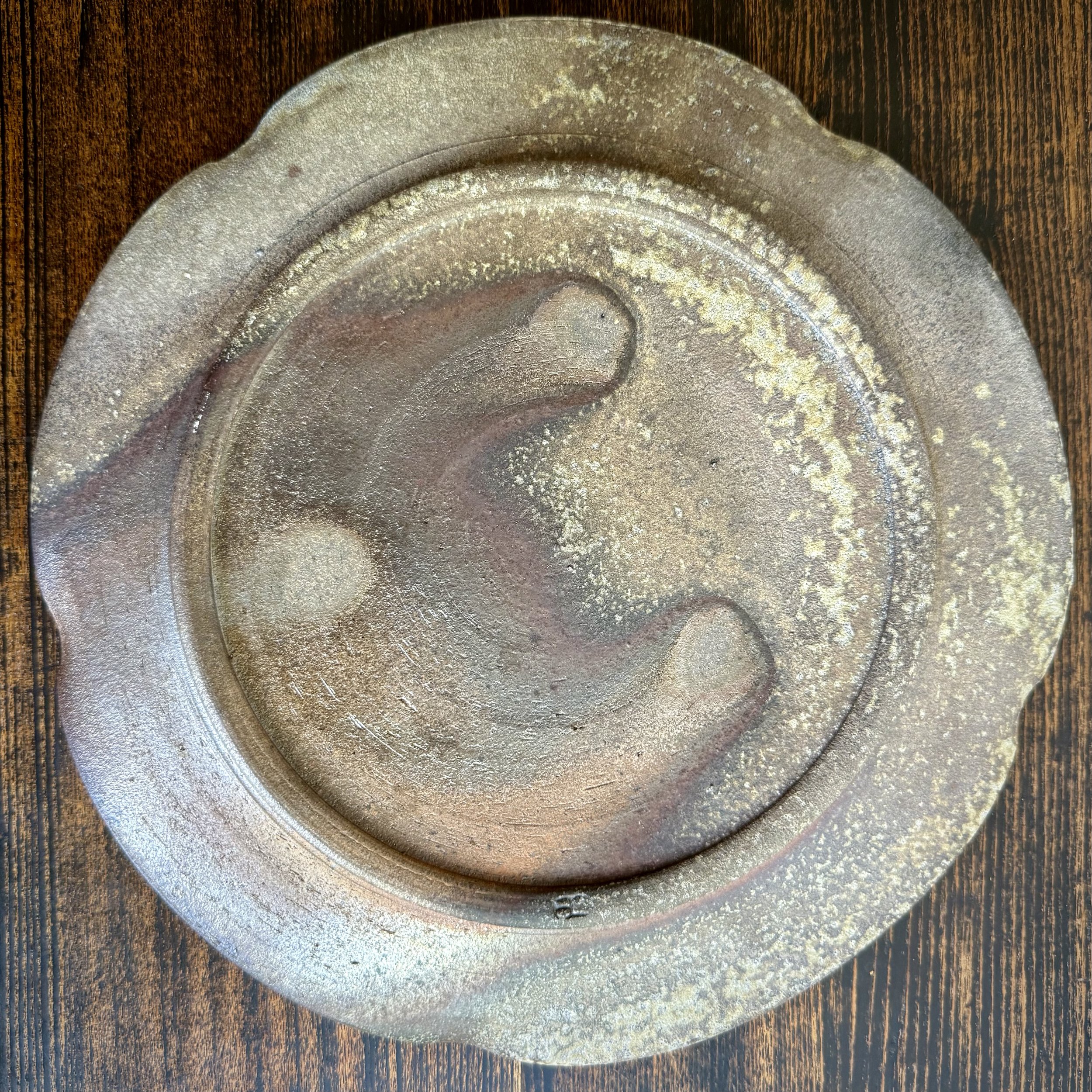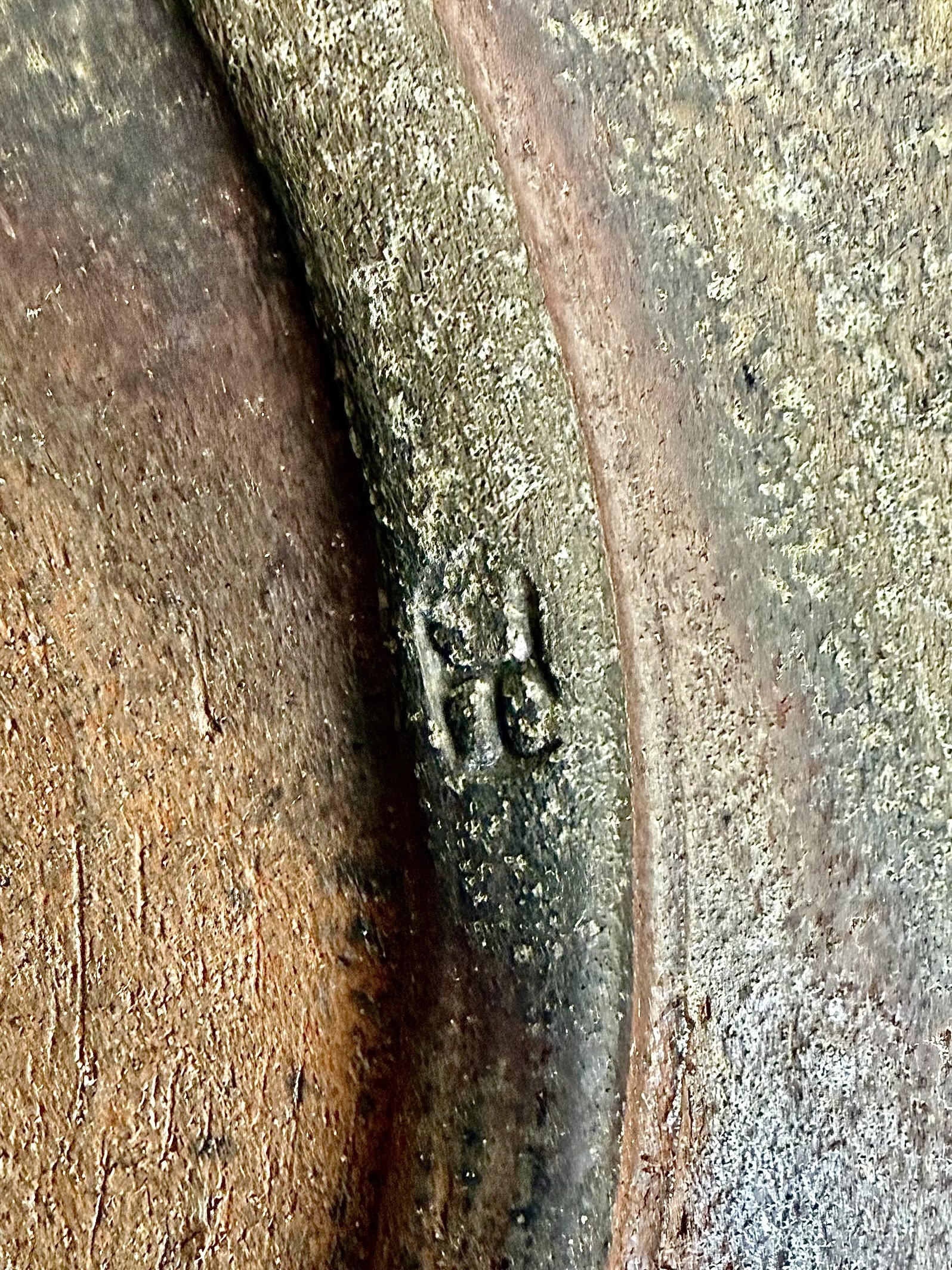 Image 1 of 3
Image 1 of 3

 Image 2 of 3
Image 2 of 3

 Image 3 of 3
Image 3 of 3




Earthy Wood-fired Plate
There are many different ways to fire pottery using wood fuel, but probably the most remarkable is the anagama kiln (穴窯), a Japanese term meaning "cave kiln"). This technique was brought to Japan from China via Korea in the 5th century. Anagama kilns are often built into a hillside, and take the form of a recumbent chimney, with a firebox at the bottom and a flue at the top. Unglazed pottery is carefully packed into the kiln, and a wood fire started. The fire must be stoked continuously, for at least two days , but sometimes as long as two weeks or more! The natural mineral salts and oxides in the wood blow past and interact with the clay, creating a natural ash glaze, and often, extraordinary patterns. The way the kiln is stacked can influence these a little bit, but the outcome is largely due to nature, and fate.
Rustic, wood-fired plate by unknown artisan. Brutalist vibes. The flow of the flame through the kiln is clearly evident in this piece!
There are many different ways to fire pottery using wood fuel, but probably the most remarkable is the anagama kiln (穴窯), a Japanese term meaning "cave kiln"). This technique was brought to Japan from China via Korea in the 5th century. Anagama kilns are often built into a hillside, and take the form of a recumbent chimney, with a firebox at the bottom and a flue at the top. Unglazed pottery is carefully packed into the kiln, and a wood fire started. The fire must be stoked continuously, for at least two days , but sometimes as long as two weeks or more! The natural mineral salts and oxides in the wood blow past and interact with the clay, creating a natural ash glaze, and often, extraordinary patterns. The way the kiln is stacked can influence these a little bit, but the outcome is largely due to nature, and fate.
Rustic, wood-fired plate by unknown artisan. Brutalist vibes. The flow of the flame through the kiln is clearly evident in this piece!